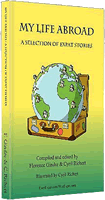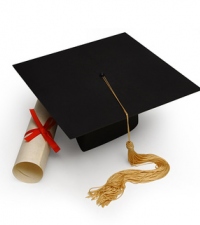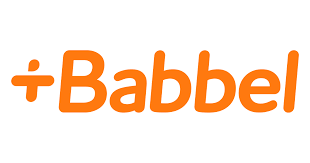Education System in Canada

Education in Canada follows a three-stage system: primary, secondary or elementary, and post-secondary. Primary and secondary education is publicly funded.
There are 12 Grades, or school levels, in primary and secondary Canadian public schools, beginning with Kindergarten (age 5) and ending with Grade 12 (age 18+). The Canadian primary and secondary school system is therefore referred to as a K-12 system.
Education in Canada is under provincial jurisdiction. Within each province, under a Ministry of Education, district school boards oversee curricula, funding, and organization of publicly provided education.
Education is compulsory in Canada up to the age 16, except in the provinces of Manitoba, Ontario, and New Brunswick, where the compulsory age is 18.
87% of students in Canada complete secondary education (high school). 63% go on to complete post-secondary education (university, college, vocational school, etc.) The literacy rate in Canada is 99%.
Language
Public education in Canada is provided primarily in English, except in Quebec and New Brunswick where the primary language of instruction is French. French language classes and immersion programs are available throughout Canada in primary and secondary schools. The availability of other language programs varies by province and school.
6% of schools in Canada are private institutions, many of which are religious schools.
Historically, all provinces in Canada had educational systems divided by religion. Today, most provinces have abolished this. However, publicly funded religious schools still operate in Ontario, Alberta, Manitoba, and the Northwest Territories. These are usually Catholic, but occasionally Protestant, Muslim, and Jewish.
All publicly funded primary and secondary education in Canada is co-ed. Some private schools are single sex.
Canada has approximately 190 school days. The school year begins in September, after Labour Day, and finishes at the end of June. Students receive a one to two week break from school at Christmas, a week break in either February (Spring Break) or March (March Break), as well as public, provincial, and territorial holidays.
Children attend school Monday to Friday for six hours a day. Students usually bring lunch to school, purchase lunch at school, or may return home for lunch if they live in close proximity to school. Students are also given at least one recess break.
Grading systems throughout Canada vary from province to province and school to school, but can be based on quantitative or qualitative marking. For example, schools in Canada may issue percentage pass marks (0%-100%), letter grades (A-F), or qualitative measurements (Poor to Excellent).
Some provinces in Canada offer specialized schools for First Nations students, at-risk youths, African Canadian students, and students with learning disabilities.
Primary or Elementary Education
Depending on the province, students must attend school from the age of 4-7.
Junior kindergarten (ages 4-5) only exists as an official program in the province of Ontario.
Kindergarten, or an equivalent, (ages 5-6) is available in all provinces in Canada. However, provincial funding and availability varies from province to province.
Primary schools begin with Kindergarten or Grade Primary/0 and continues to Grades 6 or 8.
Some provinces or districts have middle schools or junior highs, intended to prepare students for secondary education. These schools generally offer Grade 5, 6 or 7 to 8 or 9.
At a primary school level, one classroom teacher instructs students in all general subjects. Specialized teachers may instruct students in music, visual arts, or physical education. Areas of education at a primary school level include math, sciences, social sciences, health, physical education, music, visual arts, literature, English language, and French language.
Secondary Education
In Canada, the structure of secondary school varies according to province and district. Secondary schools are commonly referred to as high schools or, occasionally, collegiate institutes.
High schools include Grades 8 or 9 to Grade 12.
The cut-off age for secondary school attendance in Canada is generally 19-21, varying by province. Adult high schools offer secondary education to adults.
Areas of education at a secondary school level may include math, chemistry, physics, biology, history, economics, political science, visual arts, performance arts, information technology, robotics, literature, English Language, French language, Spanish language, sociology, psychology, family studies, health, physical education, leadership, religion, home economics (cooking, sewing, etc.), shop class (construction, mechanical repairs, etc.), astrology, calculus, etc. Individual instructors teach each subject.
Upon completion of secondary education, Canadian students receive a high school diploma, necessary for admission to a university or college. Some secondary schools also offer advanced or International Baccalaureate program courses that may be used as credit towards a university degree.
Post-Secondary Education
Post-secondary education in Canada is under provincial jurisdiction. Provincial and federal governments provide limited funding to post-secondary education institutions, with the remaining funding coming from tuition fees charged to students, and research grants.
Tuition fees are lowest in Quebec, which receives the most public funding for post-secondary education in Canada, and highest in the Atlantic Provinces, which receives the least public funding for post-secondary education.
Generally speaking, universities in Canada grant degrees (e.g. bachelor’s, master’s, or doctorate degrees) and colleges, which typically offer vocational training, grant certificates and diplomas. However, some colleges offer arts degrees that lead to or are equivalent to degrees from a university.
Bachelor degree programs are generally four years in length, while certificate and diploma programs are generally 1-4 years in length.
Unlike the United States, there is no accreditation body in Canada that oversees universities in Canada. Universities in Canada have degree granting authority via an Act of the Ministry of Education of the particular province.
Private career colleges and long distance educational institutions are overseen by provincial legislation.
Post-Secondary Education in Quebec
Post-secondary education in Quebec begins following Grade 11, also known as Secondary V, at post-secondary education collegiate institutions. Public collegiates in Quebec are commonly referred to as CEGEP – an acronym for Collège d'enseignement général et professionnel, known officially in English as a "General and Vocational College". At CEGEP, students complete a two or three year general program leading to admission to a university, or a professional program leading directly to the labour force.
Public CEGEP’s have little or no tuition fees. Today, 48 CEGEP’s exist in Quebec, 5 of which are English language CEGEP’s. There are also 50 private colleges, which function similarly to CEGEP’s, but have tuition fees.
Most bachelor programs in Quebec are three years in length, instead of four. However, students attending a university in Quebec who have graduated from college in Quebec must complete an additional year of post-secondary studies.
By Jess Gerrow, who traded city life in Canada for island life in the Mediterranean two years ago. She is a postgraduate marketing student, blogger, and freelance writer.
- My Life Abroad -
A selection of expat stories

"A fun compulsive read!"
J. Matcham, Amazon
"I strongly advise people ready to live abroad to read this book!"
Patrice, Amazon

 International Schools in Canada
International Schools in Canada French Schools in Canada
French Schools in Canada Babbel
Babbel